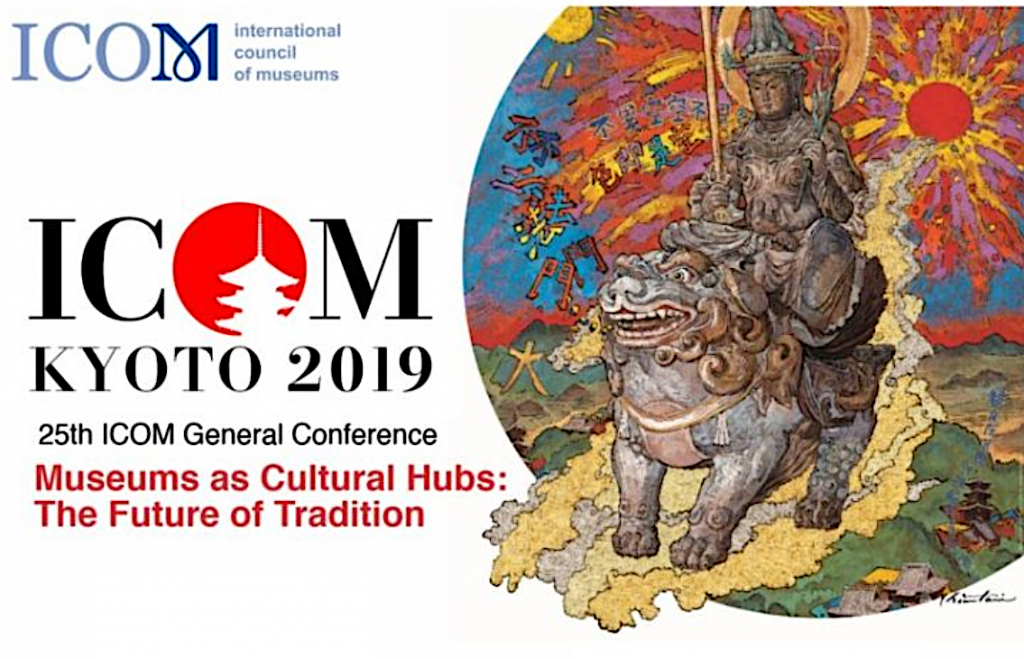
Check the program here.

Check the program here.
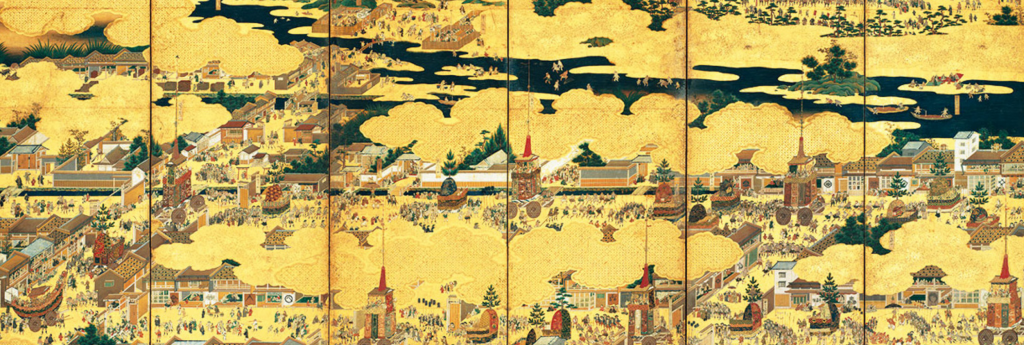
The preliminary program of the 19th UMAC Annual Conference in Kyoto has just been released.
Here are some of the highlights:
Papers from: Australia, Belgium, Brazil, Canada, Chile, China, Colombia, Czech Republic, Denmark, Estonia, Finland, France, Georgia, India, Iran, Israel, Italy, Japan, Lithuania, Mexico, New Zealand, Philippines, Poland, Portugal, Russia, Singapore, South Africa, Spain, Sri Lanka, Taiwan, UK, USA.
Download the UMAC 2019 DETAILED PROGRAM
More info about UMAC 2019.
Registrations for ICOM 2019 — do not forget to register before April 30!
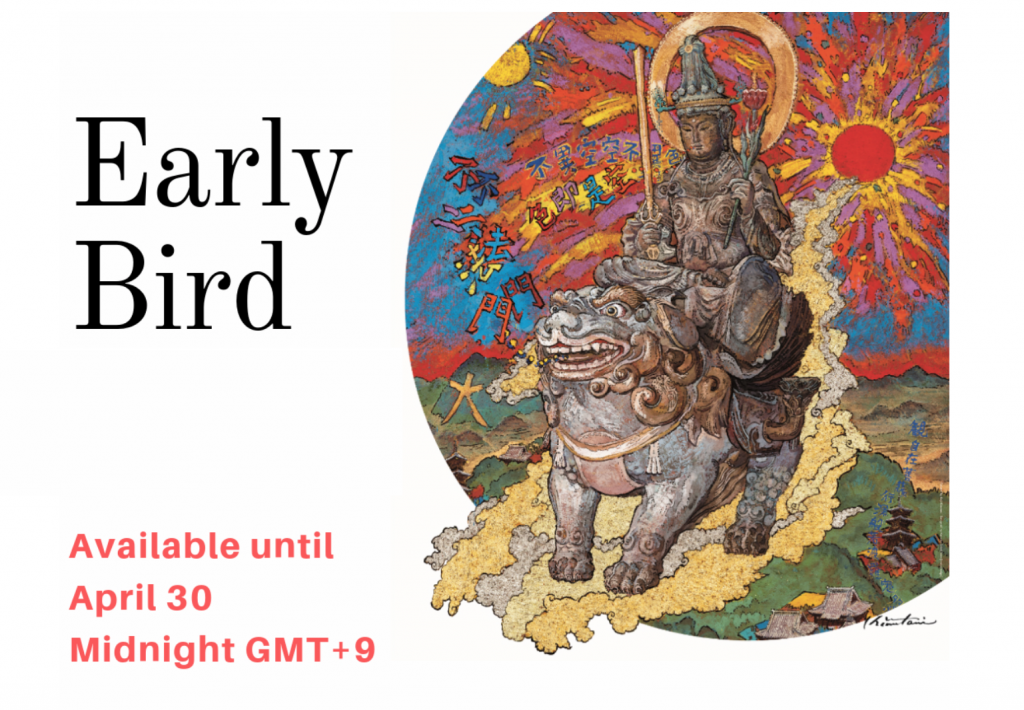
This September, Kyoto will host the 25th General Conference of ICOM, the biggest and most important conference of museums in the world, with more than 3.000 participants from all international backgrounds. This worldwide reputed hub for exchange and innovation will tackle the theme “Museums as Cultural Hubs: The Future of Tradition”.
It is through this lens that around 3,000 museum professionals from all over the world will explore the main topics of the conference. ICOM’s International Committees and many National Committees, Regional Alliances and Affiliated Organisations will organise conferences, workshops and other events. Together with Standing Committees, the secretariat will offer plenary and panel sessions about sustainability, the museum definition, disaster risk management and cultural diversity.
Have you already registered for #ICOMKyoto2019?
Read more about the UMAC Annual Conference program in Kyoto here.
The 11th Symposium of Chinese Science Museums “Science & Technology Collections – Collection, Research, and Communication” is hosted by China Association for Science and Technology – Research Center of Science Communication and Popularization (CAST-RCSCP) of Tsinghua University, China Science and Technology Museum (CSTM), and Journal of Natural Science Museum Research, and supported by Chinese Museums Association (CMA), Chinese Association of Natural Science Museums (CANSM), Scientific Instrument Commission (SIC).
A wide range of topics will be covered, but not limited to, the following areas:
What is the role of collections in science museums in the digital/new media/Internet age? Science museums usually held collections, while science centers did not accumulate or study collections. We will invite experts to share their studies on current situation, problems and reasons referring to collections in Chinese science museums.
For collecting contemporary science and technology, which is different from the much older science and technology, the questions range from how to identify what to collect, how to collect the objects and documents, how to preserve what is being collected to what to do with what is being collected.
How to transform collections into exhibits/digital/ cultural and creative products? How to explore the relationship between collections and science education?
Each topic will have a 120-minute time slot for 3-5 speakers. A 30-minute panel discussion will be featured at the end of each topic. We look forward to discussing these timely topics with professionals from science museums, universities, research institutions, as well as the industry of science popularization. The symposium will be in Chinese, and simultaneous interpretation is only provided while international speakers make their presentations.
The day commences at 8:30 am, finishing by 6:00 pm. Registration will be required. There will be no registration fees charged. Furthermore, lunch during the symposium will be arranged by the secretariat of the symposium.
The seminar will focus on the topic “Collecting Contemporary Science and Technology”. Today, in science museums, universities and national research institutions around the world, collecting contemporary science and technology is a much discussed topic. The questions range from how to identify what to collect, how to collect the objects and documents, how to preserve what is being collected to what to do with what is being collected. It is recognized by all that collecting contemporary (defined here as post 1960) science and technology requires an approach different from that of collecting much older science and technology.
Confirmed Speakers:
Dr. Richard Kremer, President of the Scientific Instrument Commission.
Mr. Gabriel Bevilacqua, Vice-Chair of ICOM CIDOC.
Mr. Claude Faubert, Coordinator of the ICOM-ITC.
Please feel free to contact Ms. Bai Ting from the secretariat of CSTM for more detailed information about the symposium.
Announcement in Chinese
The South African Museums Association Bulletin (SAMAB) provides a forum for the publication of peer reviewed articles that promote the discussion, debate and the dissemination and exchange of information on aspects of museology, with particular but not exclusive reference to South Africa. SAMAB also enables the communication of current issues, practices and policies regarding collections management, curatorial discourse, museum administration, research, exhibitions, visitor studies, community engagement, education, conservation and other topics relevant to the museum and wider heritage sector.
The theme for SAMAB 2019 is (Re)define our museums. This is to invite South African museums and their professionals to reflect on what it means to redefine the South African museum and its sector. In an era of post democracy, museums claim to have transformed, adjusted and re-invented, however principles, practices and policies need to address the dire crisis museums are in, when by definition we no longer seem to reflect the challenges, manifold visions, and responsibilities we face. This theme is an active response to the International Council of Museums (ICOM) call to revise the conversation about the existence of museums and redefining museums.
ICOM is calling upon museum professionals worldwide to take part in creating a new museum definition and an open call for proposal has been made. The definition has only seen minor adjustments over recent decades, but does not reflect and express adequately the complexities of the 21st century and the current responsibilities and commitment of museums nor their challenges.
South African Museums have the ability to influence society and foster change, they are instruments of identity and some would argue that museums are rapidly losing their power and place in society. The fourth draft of the revised edition of the White paper of Arts and Culture (2017) expressed that the role of museums within South Africa have the potential to radically shift from an institutional landscape of current lack and isolation to a landscape of creative and cultural relevance and social change. The fragmented dispensation of museums, poor policy and the lack of an integrated national museum commission and what constitutes and defines a museum in a highly charged, political and corrupt landscape is one of the many challenges. This re-definition comes at a crucial stage in South Africa’s economic, political and social climate entering a new era.
We welcome submissions, papers and academically sound opinion pieces about the topic of re-defining South African museums and can include but are not limited to address some crucial questions:
This issue will be published in December 2019
Submission Deadline: 1 June 2019
For more info, please contact Sian Tiley <sian.tiley@up.ac.za>
Call for nominations for the SAMAB Editorial Board.
Three exciting UMAC 2019 pre-conference workshops have just been announced.
The workshops will happen on September 1.
Find all the information and register here.
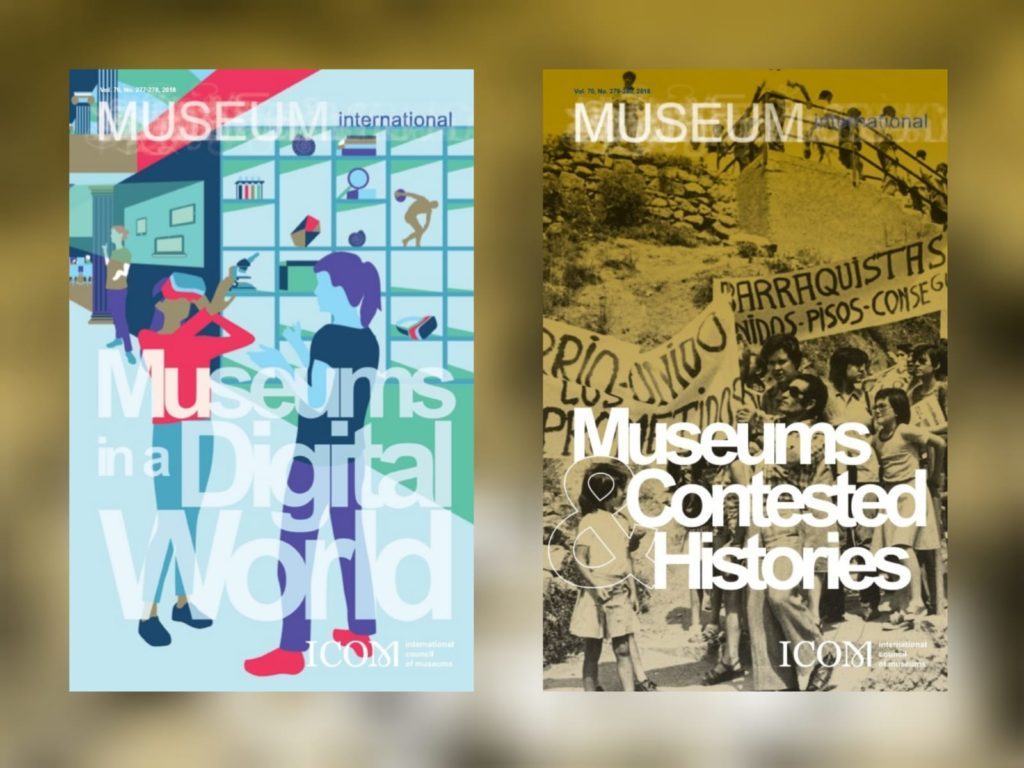
FROM ICOM:
Following the recent announcement of our new partnership with Taylor and Francis/Routledge to publish ICOM’s journal, Museum International, we are delighted to announce that ICOM members can now enjoy unlimited access to the journal’s full online archive and current issues through their ICOM member space.
To complement this, Taylor & Francis/Routledge are offering ICOM members free access to five of their museum- and heritage-related journals : Heritage & Society, Museum History Journal, Museum Management and Curatorship, Museums & Social Issues: A Journal of Reflective Discourse, Journal of Heritage Tourism.
We hope you will enjoy reading the recently published issues of Museum International: ‘Museums in a Digital World’ (Vol. 70, No. 277-278) and ‘Museums and Contested Histories’ (Vol. 70, No. 279-280).
In Museums in a Digital World, authors describe the manifold opportunities digital technology has provided museums in terms of accessibility, inclusion and the democratisation of culture.
This issue examines the new roles museum objects, collections and professionals are assuming in this digital age. It outlines the different strategies that are being implemented by museums to adapt to this ever-changing environment, and presents innovative initiatives in co-creation.
Museums and Contested Histories highlights museums’ increasing willingness to address past traumatic events through mediation and experimentation.
By acknowledging and expressing multiple points of view and voices, museums might well play a crucial reconciliatory role in ongoing controversies, giving a voice to the voiceless, shifting narrative focus, and upholding pluralism.
We hope that you will find this resource useful in your professional life and research.
To access, enter your account in ICOM’s website and click on ‘Read Museum International‘.
It has been brought to ICOM’s attention that there are some websites and individuals pretending to be ICOM and claim to provide, for a fee, fake certificates of authenticity or allowing free import and export, particularly concerning African cultural goods. False collector cards are sometimes offered as well.
The scammers claim that these certificates exonerate the holder from the obligation to present any other document such as the ownership title, the export license and certificate, the certificate of expertise, the certificate of authenticity, etc. They act most often by phone, email, and through fraudulent sites usurping the name, logo and appearance of ICOM’s website.
ICOM, the international association of museums and museum professionals, does not participate in any way in negotiations in the art market. ICOM does not issue any certificate of expertise, origin, authenticity, registration or circulation for cultural property. No international organisation has a mandate in this area. Only competent national authorities are authorised to issue this type of document.
This scam has already claimed many victims, especially concerning Cameroon. We urge you to be extremely vigilant, and to respect the national and international legislation in force when you carry out transactions involving cultural goods.
UNESCO is also a victim of this scam and has published an alert on its website.
Be very careful of:
Transfer is not a particularly new concept. In the past, it referred to the implementation of economically relevant or application-oriented research findings. Nowadays the term has taken on a broader meaning. In a position paper published by the Wissenschaftsrat (German Council of Science and Humanities) in 2016, “transfer” is defined as the conveyance of scientific and technological knowledge into society, culture and politics in the context of various activities.
Accordingly, the Wissenschaftsrat classifies science communication as a transfer activity and explicitly designates exhibitions as a potential transfer medium. This is by no means surprising as museums have been important institutions for the public re-presentation of scientific study and discoveries since the 19th century. However, the Wissenschaftsrat holds a critical view of the traditional concepts of popularisation and knowledge transfer because, by its nature, transfer is not one-directional, but rather a mutual relationship based on exchange and can only succeed if the content and methods correspond to the needs and expectations of the public.
The question of how to form such asymmetrical relationships has been the subject of intensive discussion at least since the literary scholar Mary Lou Pratt coined the term “contact zones” in 1991. New variants of the concept, such as “trading zones” (Galison, 1997) and “transaction spaces” (Nowotny/Scott/Gibbons, 2004), indicate that the academic community has come to a new understanding of science and its transfer relationships. Under this expanded definition of transfer, the focus has also shifted to less frequently considered aspects of university collections and the services they provide, e.g. consultation and advice, translation services and collaborative research activities.
University collections are especially conducive for testing experimental forms of object-oriented transfer. Because of their unique character, university collections can pursue very different paths than, for example, traditional museums. Collaborating with other “transfer specialists” at universities can produce promising results, be it in relation to subject-specific didactics, transfer centres or science communication departments within the faculties. With this in mind, the conference aims to highlight the performance potential of university collections for scientific transfer both within and outside the university.
At the 11th Collection Conference, hosted by the University of Münster and the University Collections Association (GfU) from 11th to 13th of July 2019, participants will discuss how and to what extent scientific collections can contribute to university transfer activities. What forms of transfer activities are conceivable? What might a successful bi- or multi-directional transfer look like? What processes of change could be set in motion by focusing on transfer in and for the collection – as well as within the university?
For the upcoming conference, we are interested in theoretical-reflective papers and praxis-based contributions. The following formats are planned:
The conference will focus on:
regarding the transfer zone COLLECTIONS | PUBLIC SPHERE
• locations and media of transfer
• mobile transfer formats
• re-presentation of pathways to knowledge
• models for bi- and multi-directional transfer
• collections and application-oriented research
regarding the transfer zone COLLECTIONS | UNIVERSITY
• collaboration with particular disciplines, science research, science communication and subject-specific didactics
• positioning collections within university transfer strategies
The length of the presentations should not exceed 20 minutes.
The workshops should offer participants and especially the curators of university collections the opportunity to share praxis-oriented expertise and experience. Possible themes include:
• transfer formats, analogue and digital,
• new developments in provenience research and its funding
• technical and conservational issues
Further suggestions for workshops on the conference theme “transfer zones” are welcome.
Participants may also submit individual wishes for the workshop section.
The workshops can have a duration of one or two double periods.
A poster session will offer the possibility to present and discuss current projects and the latest research findings.
The University Collections Association (GfU) will award six grants of a max. 200 euros each to offset the cost of travel and accommodation expenses for doctoral candidates who provide a substantial contribution to the conference (presentation, workshop, poster). Please submit an informal application to the treasurer of the GfU, Prof Dr Cornelia Weber.
Conference languages are German and English.
Please send your presentation, workshop proposal (max. 1,500 characters) or poster proposal (max 750 characters) together with a short CV by email no later than March 15th, 2019 to the following address:
Dr Eckhard Kluth, Central Curator
Central Curatorial Department of the University of Münster
Email sammlungstagung@uni-muenster.de
Conference website here.
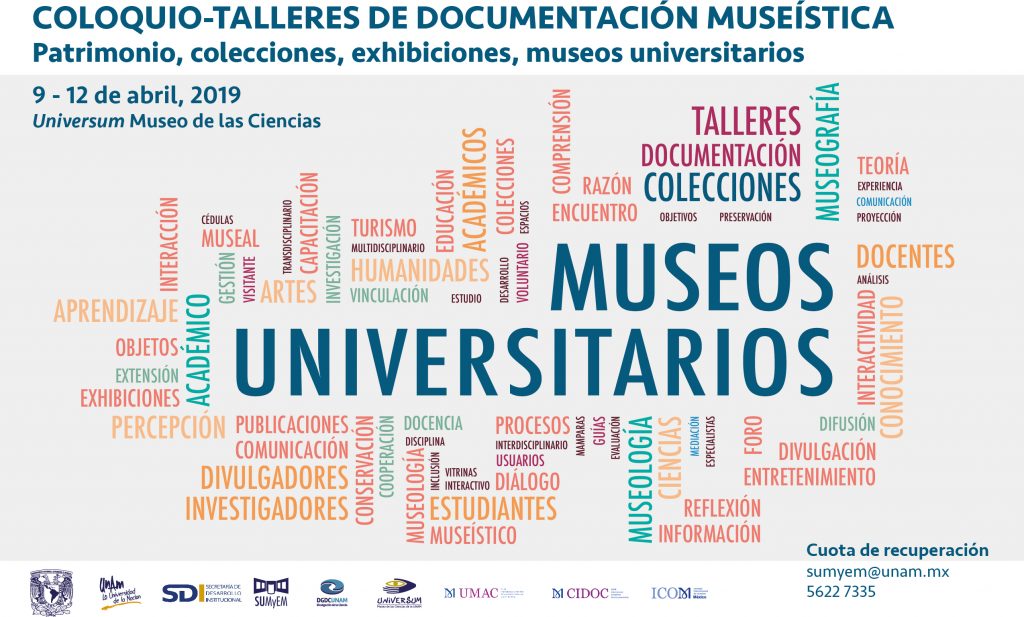
UNAM (Universidad Nacional Autónoma de México) has a long and consolidated trajectory in terms of heritage, collections, exhibits, and museums. Not only since 1910, when the furniture and facilities of the old National Schools were attributed to the National University, or since 1929, when its activities are redefined and its assets are reassigned by the University Autonomy, moreover the relationship of our University with the national heritage goes back to 1825, when by presidential decree it was decided that the valuable prehispanic pieces were to be concentrated in “one of the classrooms of the University”.
Since then and up to this day, our University has played a lead role in Works related to the gathering, research, conservation, preservation, exhibition and dissemination of the country’s cultural and natural assets, promoting always close contact with national and international specialized agencies, which maintain it up to date in the museum and heritage movements worldwide. Simultaneously, UNAM has generated museum activities of its own that have marked it significantly. These began during the first half of the 20th century. Initially, with the appropriation of the Geology Museum (1929); later, by means of temporary exhibits presented in galleries in Mexico City’s city center.
Once UNAM was installed in the Coyoacán campus, it not only secured the preservation of cultural assets under its care but, stemming from an ample program of cultural dissemination it also created its own exhibition spaces, it developed novel exposition techniques and began conforming new archives that consolidated a great variety of topic collections, used in both teaching and research, and extension and dissemination. During this process it undertook the task of rehabilitating its historical buildings as museums and cultural centers.
To date, we have registered 26 museums and multiple museographic spaces that belong to UNAM created in different moments and circumstances. Its affiliation to different university agencies explains the diversity of objectives that they pursue. The difference in topics, goals, epistemological and dissemination approaches, more than hinder the collector and exposition activities, ratify the vitality of this important museum compound and confirm UNAM’s social projections in terms of its heritage, collections, exhibits, and museums.
For a long time, universities have worked in this aspect. However, there is still much to do, since in the las few years there has been a noticeable growth in collections, exhibits, and museums both at UNAM and other higher education institutions, that have increased the expositive contents, diversifying the concepts and ideas of heritage, and there has also been an important change in the uses of heritage spaces and assets. On the other hand, hypoconnectivity forces a reorganization and documentation of a lot of information on collections, exhibits, and museums to be undertaken to offer it to the public in the new consultation digital platforms. The aforementioned advises to revisit, update, and document that has been done so far and propose, stemming from a inter and transdisciplinary standpoints, new way of registering, integrating, documenting, and disseminating the assets and activities in museum terms.
In order to reach this, conducting encounters that gather specialists and people in charge of the heritage, the exhibits, and the museums of institution of higher education, becomes necessary; with the aim of reflecting on what has been done and the long-terms expectations and, mainly, to reach consensus that establish basic heritage documentation and museum activity standards.
Being aware of this situation, the University Seminar on Museums and Museographic Spaces (SUMyEM), the General Directorate of Dissemination of Science (DGDC), the General Directorate of University Heritage (DGPU), Universum Museum of Science, and the Panel of the International Comitee of Documentation (CIDOC) of ICOM-Mexico call on the university community and interested public to participate in this Colloquium.
To gather specialists and people responsible for cultural and natural heritage, collections, exhibits, and museums at UNAM and other institutions of higher education to dialog and reflect on the state of art in each of the topics, in order to propose strategies that improve its ordinance, preservation, management, and documentation and, along with it, its visibility in the cultural aspect.
Directed to: museum professionals, people responsible for collections, museographers, designers, teachers, museologists, heritage specialists, cultural managers, students of akin areas, and public interested in these topics.
Tuesday 9 to Friday 12, April 2019
Colloquium: 10-14 h; Workshops 16-19 h.
UNIVERSUM, Museum of Science, UNAM
University heritage:
The concepts of heritage have significantly varied in the last years in both local fields and at an international level, thanks to organizations such as ICOMOS, ICOM, UNESCO, that promote the protection of the cultural/natural, tangible/intangible assets, worldwide. As a matter of fact, the protection, conservation and dissemination of the heritage, collections, and university museums were formally settled in 2013 and 2015. However, the institutions of higher education, in addition to guarding the assets in their care, are constant producers of tangible and intangible assets. This leads us to analyze:
University collections:
Throughout history, universities, scientific and literary institutes, and centers of higher education have managed to gather a great number of collections -inherited, donated, bought, or elaborated for the specific purpose- in order to comply with the functions of teaching, research, dissemination, and extension of culture. Many of them are already located in museums. Nonetheless, they are still classified and catalogued stemming from their intrinsic or thematic characteristics, and do not respond to museological requirements. This diversity of archives leads us to analyze:
Permanent, temporary, and itinerary exhibits in museums and spaces of higher education:
Curatorships and museographic montages require a great conceptual, methodological, technical, and practical effort. They are cultural manifestations in themselves, that imply interdisciplinary and creative processes, frequently little known and undervalued. Given the singularity of each exhibit, registering in detail the different aspects that these maneuvers involve with the purpose if capitalizing the different museographical practices, becomes necessary. This leads us to analyze:
Throughout the 20th century, universities and institutes have undertook the task of establishing museums and exhibition spaces with different objectives and purposes. But many have not managed to subsist and have been forced to close their doors. The lack of horizontal and transversal perspectives on their operation and the activities they perform, and, above all, the lack of thorough registries on the works performed renders them very vulnerable. This leads us to analyze: